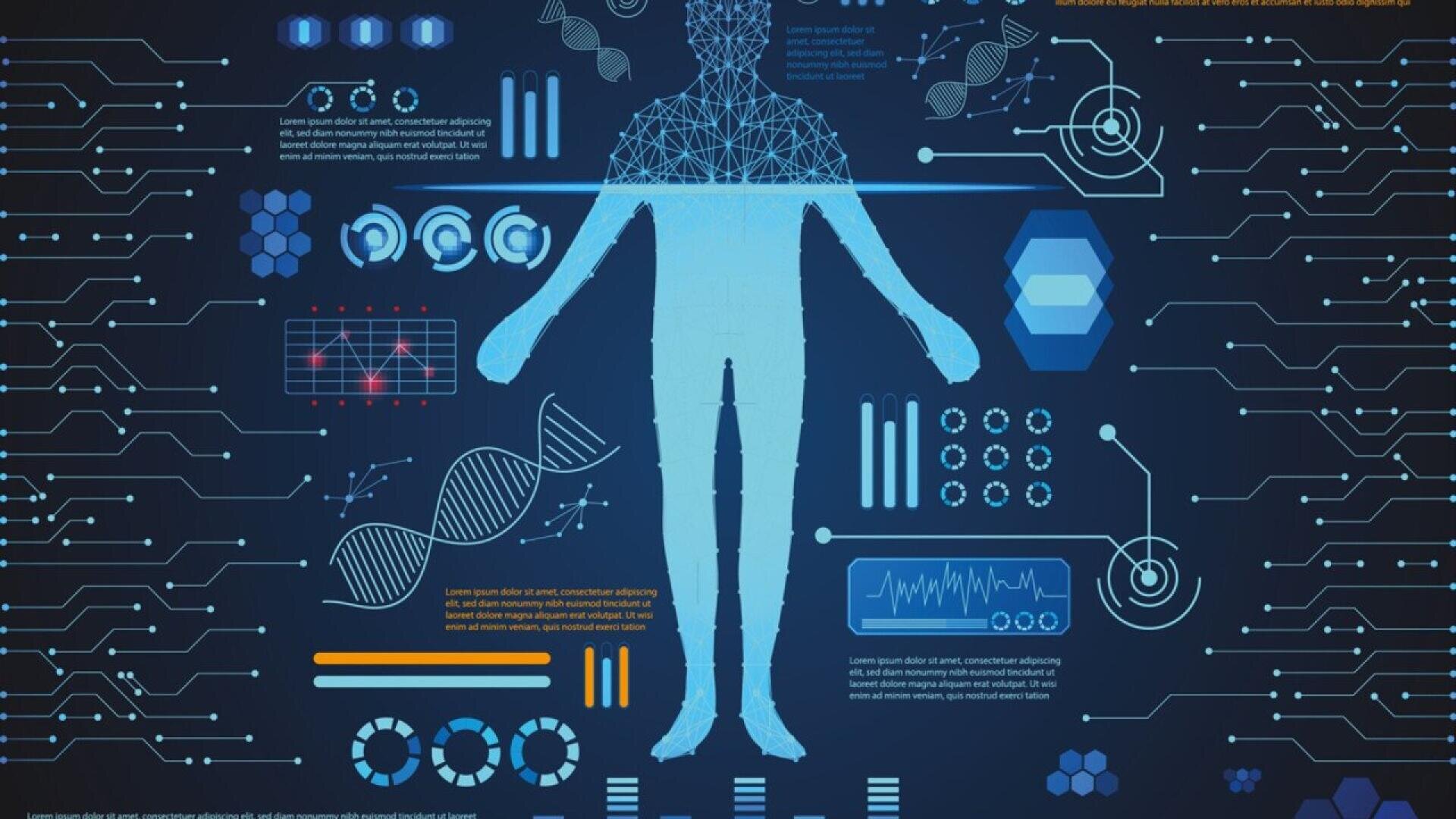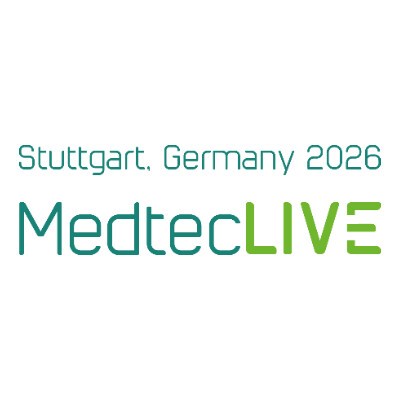Digitisation outside of the box: With systems medicine to new individual therapy
Anyone who has problems with their kidneys is often sent to a nephrologist. However, the symptoms can also have other causes. While medicine often only looks at one organ, systems medicine takes a broader view of the entire human system. This is also made possible by the use of modern technologies.
Systems medicine combines methodological approaches from genome and post-genome research (the so-called "OMICS" data) with digital analyses. To this end, data from genes, protein building blocks, metabolic products, lifestyle and the environment are collected and correlated in virtual computer models. Imaging techniques, sensors and computer algorithms are used, among other things.
"Systems medicine and thus ultimately also a personalised approach in medicine can support finding the best possible individual therapy. The goal is to better understand disease mechanisms to derive individual prevention and treatment options," defines Georg Münzenrieder, Head of Division at the Bavarian State Ministry of Health and Care. Jörg Traub, Managing Director of Forum MedTech Pharma adds: "Cardiovascular diseases and oncology are common disease patterns in developed countries where systems medicine can bring together data to better understand these diseases."
In principle, systems medicine does nothing different than a good family doctor: He takes a holistic view of his patient, takes history and lifestyle into account in the diagnosis, and establishes connections that are not visible at first glance. The diagnosis is then based on empirical values and the knowledge of the physician. "Systems medicine takes this holistic approach to a completely new level because it can precisely analyse and contextualise more data than humans. This is one of the major future topics of medical care in Germany. The technologies for data collection – from sensors to imaging – are topics of MedtecLIVE with T4M in Nuremberg in May," says Christopher Boss, Head of the Medical Technology Trade Fair at NürnbergMesse.
A look at Germany
The first concepts for establishing systems medicine in Germany already exist. The Federal Ministry of Education and Research has been promoting this project since 2013 with the e:Med research programme and a budget of 200 million euros. In many projects, mathematicians and information scientists are working together with physicians and biologists from universities, major research institutions, hospitals, and industrial companies nationwide. In five different modules, they analyse genetic material, proteins, or metabolic products of biosamples such as blood, urine or tissue. The knowledge gained from this is used with mathematical models to make predictions about the modes of action of drugs and therapies.
"Today, we can diagnose and classify many diseases much more precisely and thus treat them in a more targeted manner. Especially for cancer, new diagnostic, and therapeutic biomarkers on different levels – such as DNA or protein level – have been discovered through systems medicine approaches, which enable individualised therapy. For many diseases, the genetic background has been discovered, but currently all omics levels are already included, which also have an influence," says Silke Argo from the e:Med project office. "In the area of cardiovascular diseases, for example, the Bavarian Ministry of Health and Care is involved with the lighthouse project for the medicine of the future – 'DigiMed Bayern' – based in Munich under the scientific leadership of the German Heart Centre Munich," Münzenrieder explains. The project "DigiMed Bayern - for the medicine of the future" is a significant step towards digitalisation for improved healthcare in the field of cardiovascular diseases. The aim is to combat heart diseases such as atherosclerosis through individualised prevention, diagnosis, and therapy. To this end, extensive health data of patients with atherosclerosis is collected and analysed. In addition, important activities for the prevention of heart attacks and strokes have been initiated.
As part of the DigiMed Bavaria lighthouse project, the "Vroni Study" of the German Heart Centre Munich is being carried out, among other things. It is used for screening and early detection of "familial hypercholesterolaemia" (FH). FH is a congenital disorder of the lipid metabolism which, if left untreated, can cause serious cardiovascular diseases at a young age. It is estimated that there are more than 270,000 carriers of the genetic defect in Germany, of whom less than one per cent have been diagnosed. The Vroni study is to implement and evaluate a nationwide screening programme in Bavaria for children aged 5 to 14 years for the early diagnosis of FH. Based on this study, the diagnosis and therapy situation for affected children of all age groups throughout Germany is to be improved in the future. So far, 8,100 children have been tested, the aim is to reach 50,000. With the simple and quick examination, 5- to 14-year-olds can participate in the study with a drop of blood from the fingertip. Since the disorder of cholesterol metabolism is hereditary, blood relatives of affected children also have a high risk of being carriers of the pathologically altered gene. "In each family of a child diagnosed with FH, we can statistically identify three other affected relatives," explains study doctor Raphael Schmieder.
 TEDIAS, the test and development centre for digital anamnesis systems (© Fraunhofer IPA, Sascha May)
TEDIAS, the test and development centre for digital anamnesis systems (© Fraunhofer IPA, Sascha May)
Data collection through sensors, imaging or laboratory findings is the contribution of medical technology to systems medicine: a Fraunhofer project shows that automated collection and evaluation – in future certainly with the help of artificial intelligence methods – works. Researchers at the Fraunhofer IPA, in cooperation with the University Hospital Mannheim and the medical faculty, implemented a system for anamnesis and vital data acquisition for hospital admissions, where the direct presence of medical staff will no longer be necessary. At the centre of the new system is a sensor system with an avatar for questioning the patient. Integrated infrared cameras measure body temperature, sensors determine heart and breathing rates, microphones record breathing sounds or the voice. "Ideally, the patient doesn't notice much of this because he or she is simultaneously answering a virtual doctor's questions about his or her medical history and symptoms," explains Fraunhofer researcher Jens Langejürgen. "The consistency of the data and the consistently high quality further help to recognise the course of diseases at an early stage and to be able to react to them. This data also forms the basis for training algorithms that have the potential to essentially improve the patient's medical care."So, the technologies are already in place, and the conceptual approaches have been able to stand up in studies and projects. The next step is the broad application on and for the benefit of the patient: In addition to the large studies and projects under scientific leadership, the approaches of systems medicine are also being used in digital, commercial products.
Digital health applications - a building block of systems medicine
"Another important element, which is emerging very strongly at the moment, are so-called DiGAs, i.e. apps with a digital approach, which are made available to customers. To what extent this will be commercially successful, however, is still unclear," says Ulrich Jerichow, CEO of Vitascale, a respiratory gas analysis company. DiGA stands for digital health apps that support patients in diagnosis and treatment. In addition to health apps for the smartphone, this also includes browser-based web applications or software for use on desktop computers. When the Digital Health Care Act (DVG) comes into force at the end of 2019, people with statutory health insurance will be entitled to DiGAs. The prerequisite for this is a doctor's prescription and approval by the health insurance fund. Currently, patients can provide therapy-relevant data such as blood glucose values in the form of a simple data extract for doctors. Over the year, insured persons will also be given the opportunity to enter data from the DiGA into their electronic patient file. "Experts and manufacturers of apps and wearables on the subject of sensor technology are also among the exhibitors at the medical technology fair MedtecLIVE with T4M," says Boss: "The transition of systems medicine approaches from the scientific sphere to implementation in products is underway, and we are showing many results at the fair."
Vitascale is such a company. It enables digital healthcare at home and in clinical practice. With the Vitashape device, a non-invasive breath analysis can be carried out. Depending on the composition of the breath, conclusions can be drawn about metabolism, nutrition, and performance. For this purpose, Vitashape measures energy demand and intake, shows how much fat and sugar is burned and checks nutritional habits. The challenge in device and system development here was a diagnostic system suitable for end customers. "Most of the medical technology devices that come onto the market are very B2B heavy, mostly very expensive, very complicated to use and hardly have the approach of being used in prevention, but rather in intervention. We think that future medical technologies must be able to enable patients and customers to determine relevant health parameters themselves, and only when necessary, through intervention with an expert, to receive a recommendation on how the state of health can be improved or which therapy approaches are now most effective," explains Jerichow. The system provides that patients first receive an assessment to measure their metabolism. If this is in a critical range, they can call on a network of experts for an examination. With the consultation of a specialist expert, an algorithm in the system creates a therapy programme based on the measured values. Jerichow is one of the driving forces at MedtecSUMMIT, which takes place as part of MedtecLIVE with T4M. "Technologies are available, but the path to their use in daily routine has some challenges, not only in terms of regulation, but also in terms of reimbursement. The session, 'Data-driven diagnostics – from technology to user' will provide an overview of sensor-based diagnostics technology, the regulatory framework in the EU and the US, use cases for digital diagnostics, and the needs and perspectives of users," says Jörg Traub, organiser of the congress on the challenges of implementation.
Without data, no data-driven diagnostics
What is usually only used selectively in DiGAs is the basis of systems medicine in general: data. For example, image data from CT, MRI, contrast CT imaging, laboratory reports, sensor technology such as ECG, long-term ECG, measuring devices are used. The prerequisite for this is, on the one hand, information by doctors and the consent of the patients. For research purposes, these are anonymised and compiled in research data centres. Traub sees a need for action in the design of the data rooms and advises looking to the north of Europe: "In Scandinavia, for example, there are standardised patient files that merge data and allow secondary use for research in science and industry in compliance with the GDPR." Concrete demands are therefore coming from the Bavarian Ministry of Health: "Bavaria is therefore calling for the dismantling of hurdles for research projects under data protection law. In our view, the design of the European Health Data Space, or EHDS for short, is particularly interesting here, because it will affect us all: The regulations have the potential to strengthen public interest-oriented research with health data, especially for the researching industry," Münzenrieder adds.
Especially in Germany, the question of the use of patient data is still unanswered today. "The digitisation and standardisation of medical processes and data (image data, examination data), as well as the legal utilisation of data, would provide us with further valuable information to enable patients to receive even better treatment," says Silke Argo. On the patient side, there is currently a lack of trust in the legal use of the data. And doctors are also concerned about the increased transparency of their individual work. At the national level, the Federal Ministry of Health's strategy for the digitalisation of health and care is now available. It mentions important structural changes, such as the new establishment of a national access point for patient data or the new foundation of a data protection body. "In terms of concrete implementation, we now need a turbo for digitisation. Key stakeholders – and here we are also thinking of research and industry – absolutely have to be involved in this," Münzenrieder emphasises.
 © Dr. Georg Münzenrieder | © Dr. Jörg Traub | © Christopher Boss | © Dr. Ulrich Jerichow
© Dr. Georg Münzenrieder | © Dr. Jörg Traub | © Christopher Boss | © Dr. Ulrich Jerichow
One goal: health maintenance instead of therapy
Systems medicine not only paves the way for individualised medicine, but also complements medicine with the aspect of prevention. The current focus on intervention can thus shift to keeping people healthy and thus significantly relieve the burden on the health system in the long term. "We are talking more about health insurance funds and not health insurance funds and there, I think, a transformation has to take place. People who currently think "I go to the doctor when I'm sick" may need to be more motivated to go to the doctor when they are still healthy. There, they are given opportunities and ways to maintain or improve their health before a critical condition actually occurs. Many disease patterns such as diabetes, obesity, metabolic diseases as well as lung diseases are very well measurable and preventable through well and sustainably set up preventive admissions," Jerichow explains.


